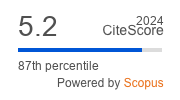Article | Open Access
Is a European Practice of Mass Atrocity Prevention Emerging? The European Union, Responsibility to Protect and the 2011 Libya Crisis
| Views: | 4376 | | | Downloads: | 2663 |
Abstract: Observers have classified the European Union (EU) as reluctant in its implementation of the “Responsibility to Protect” (R2P) (Task Force on the EU Prevention of Mass Atrocities, 2013). This contribution revisits that argument by employing a more nuanced interpretation of norm implementation than the binary conceptualisation typically applied. By appraising EU reactions to the 2011 Libyan crisis, we investigate whether a “European practice of mass atrocity prevention” is emerging and if so how this relates—or not—to R2P. We do this by investigating EU practices seeking to protect people from genocide, ethnic cleansing, war crimes and crimes against humanity—paying particular attention to the three pillars and four policy areas included in the R2P framework (ICISS, 2001). Our review of EU responses to Libya seeks to unveil whether and if so how EU practice related to mass atrocity prevention in that country rejected, adopted or indeed adapted R2P. The enquiry appraises both how R2P mattered to the EU response and how the Libya crisis affected the Union’s approach to mass atrocity prevention and within it R2P. In this way, the study asks how norms can change practice, but also how practice can change norms. As such, our focus is on the inter-relationship between principles and practices of protection.
Keywords: European Union (EU); Libya; mass atrocity prevention; norm implementation; practice turn; Responsibility to Protect (R2P)
Published:
© Chiara De Franco, Annemarie Peen Rodt. This is an open access article distributed under the terms of the Creative Commons Attribution 4.0 license (http://creativecommons.org/licenses/by/4.0), which permits any use, distribution, and reproduction of the work without further permission provided the original author(s) and source are credited.


